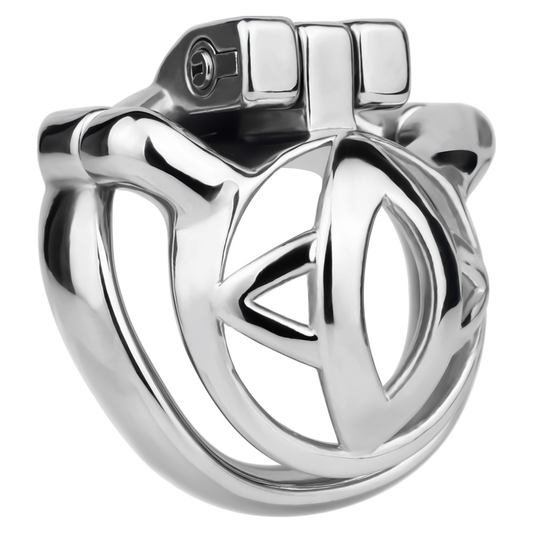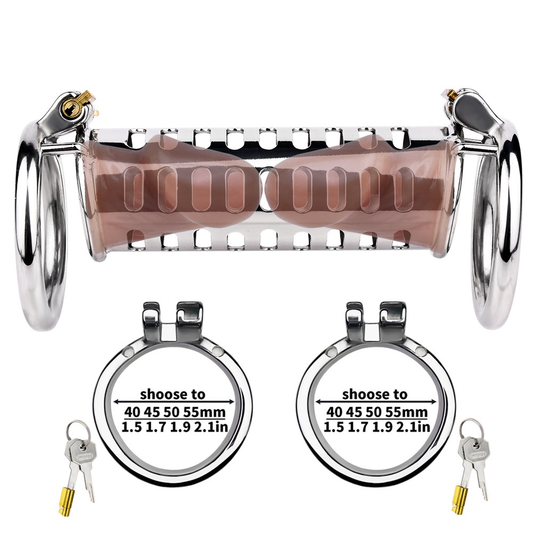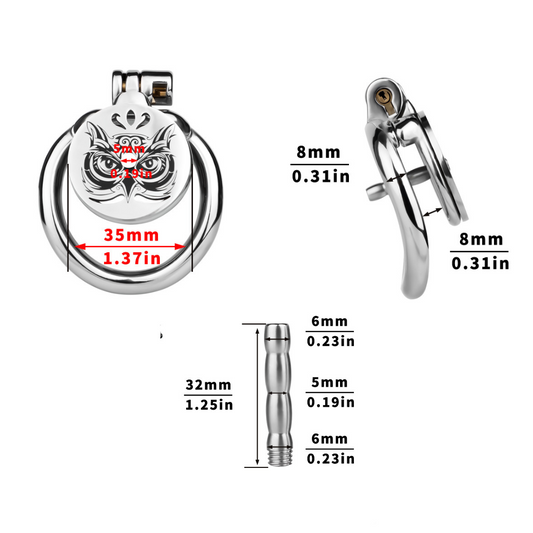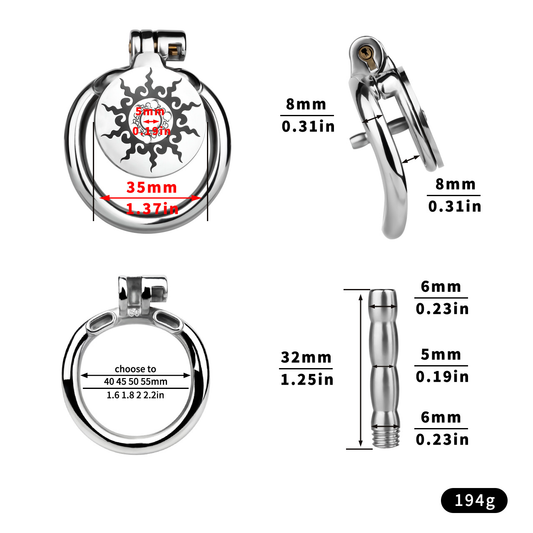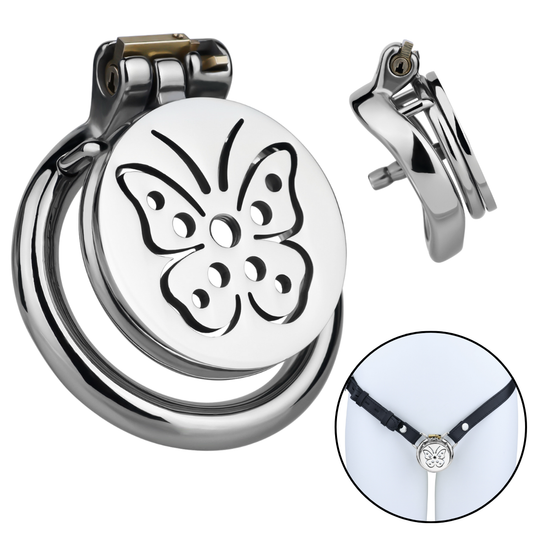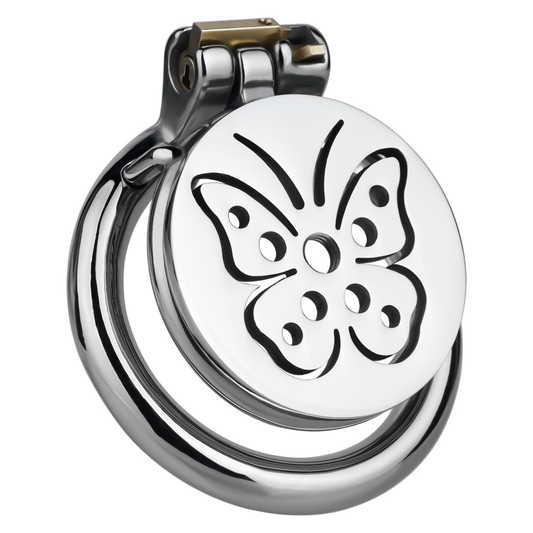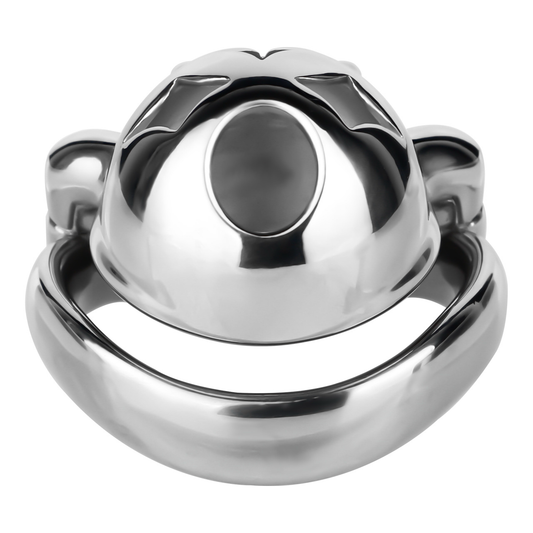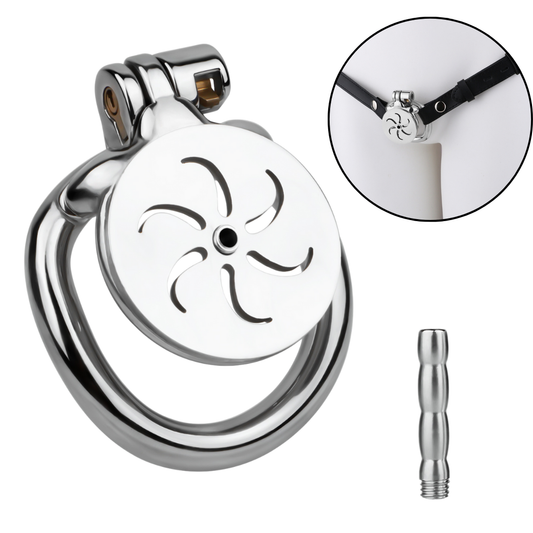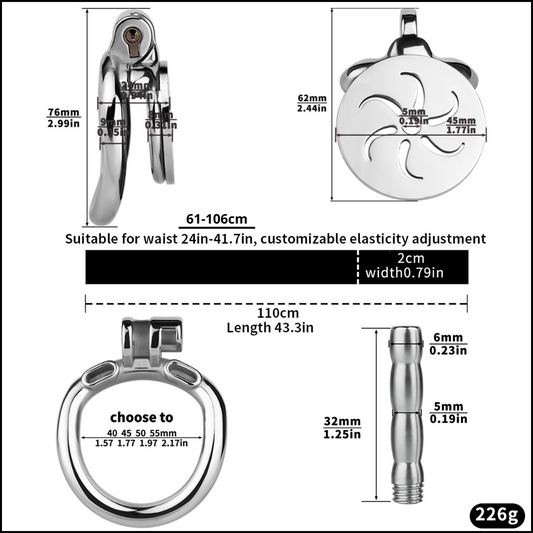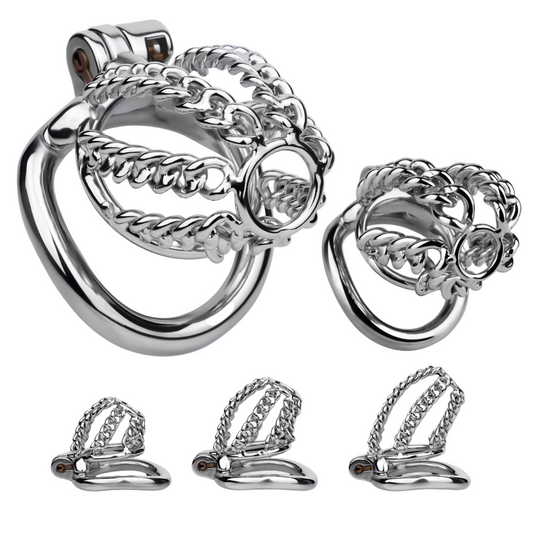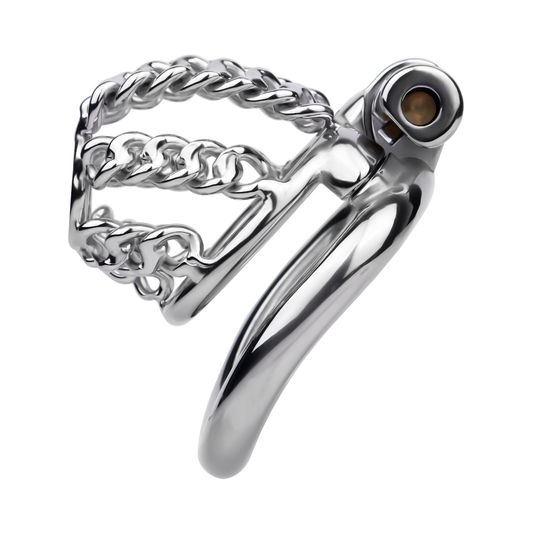Finding the Most Comfortable Chastity Cage
Share
Chastity play has gained significant popularity in BDSM field in recent years. Chastity cages, also known as male chastity devices, offer a unique form of erotic control and submission. While security and functionality are crucial aspects to consider when choosing a chastity cage, comfort should never be compromised. In this blog, we will explore various materials commonly used in chastity cages and identify the most comfortable options available.
1. Metal Chastity Cages:
Stainless steel chastity cages have long been a favorite among enthusiasts due to their durability, aesthetic appeal, and weightiness. The smooth and polished surface of stainless steel provides an excellent sensation against the skin. Additionally, stainless steel is hypoallergenic and non-porous, making it easy to clean and maintain hygiene.
When it comes to comfort, stainless steel chastity cages excel in their ability to maintain a constant pressure on the wearer's genitals without causing discomfort or irritation. They offer a secure fit, and their weight can provide a subtle reminder of submission. However, some individuals may find the weight of stainless steel cages to be too much for extended wear, particularly during daily activities.
2. Plastic Chastity Cages:

Plastic chastity cages, typically made from medical-grade polycarbonate or other similar materials, have gained popularity for their lightweight nature and affordable price points. These cages are highly customizable, with various sizes and designs available in the market. Due to their transparency, they offer an added visual element during play.
Comfort-wise, plastic cages are generally lightweight and provide a breathable experience for the wearer. The smooth and rounded edges ensure minimal chafing or irritation. However, they may lack the same level of durability as metal cages, and excessive bending or stress can lead to breakage over time. Proper sizing is crucial to avoid discomfort caused by tightness or pinching.
3. Resin Chastity Cages:
Resin chastity cages are relatively new to the market and offer a lightweight and cost-effective alternative to metal cages. Made from high-quality synthetic resins, these cages can be molded into intricate and aesthetically appealing designs, catering to individual tastes.
Resin cages are known for their comfortable fit, as they can be precisely molded to the wearer's anatomy. They offer flexibility, allowing for easy movement during day-to-day activities. However, it is essential to choose a reputable manufacturer to ensure the use of body-safe materials, as some low-quality resins may cause skin irritation.
4. 3D Printed Chastity Cages:
The advent of 3D printing technology has brought about exciting possibilities in the realm of chastity cages. 3D printed cages are customizable, allowing for a perfect fit based on individual measurements. They can be printed using various materials, such as plastic or metal composites, offering a blend of comfort and durability.Comfort levels with 3D printed cages can vary depending on the materials used and the quality of the print. When opting for 3D printed cages, it is crucial to select a design that takes into account smooth edges, proper ventilation, and a secure locking mechanism. Additionally, regular cleaning and maintenance are necessary to prevent bacterial growth within the crevices of the printed structure.
While the quest for the most comfortable chastity cage is subjective, understanding the different materials and their unique characteristics is essential in finding the perfect fit for your desires and needs. Stainless steel offers durability and a weighty feel, plastic provides lightweight breathability, resin offers customization, and 3D printing allows for tailored designs. Prioritize comfort and safety above all, and experiment to find the chastity cage that adds pleasure to your intimate journey. Remember to communicate openly with your partner(s) and prioritize consent and mutual enjoyment in all aspects of your exploration.










